
This is part of our monthly series. Catch up on last month’s summary here: What happened to global investment markets in August 2025?
In September, UK government borrowing costs rose sharply. When investors buy government bonds, they expect a return called a ‘yield’.
In the UK, these bonds are called ‘gilts’. Yields on gilts climbed to their highest level in more than 25 years. That means the government is paying more just to borrow money — money that could otherwise go to public services.
The timing has added pressure to the upcoming Autumn Budget, now confirmed as 26 November. Rising borrowing costs mean there’s less room for new spending, something commentators say is already testing Chancellor Rachel Reeves’ plans.
Compared to other developed economies, such as the US, the UK may face higher costs to pay interest on its national debt. This could leave less space for investment in growth or public services. Recent speculation about potential tax reforms in November’s Budget have also added to public concern, with some savers considering action before the full picture is clear.
At the same time, the US faced its first government shutdown in nearly seven years after Congress couldn’t agree on a budget. Together, these events show how closely political decisions and markets are linked.
These changes don’t just affect governments. Mortgage rates, loan costs, and even savings products are linked to yields. When yields rise, everyday borrowing can become more expensive for households and businesses.
The uncertainty around the Autumn Budget has also filtered down to pension savers. Some people are considering transferring pensions and taking their 25% tax-free cash before the announcement in late November.
The Financial Conduct Authority (FCA) advises that if you’re only thinking of taking your tax-free cash in response to the Autumn Budget, it’s worth pausing first. Acting quickly could mean making a decision that can’t be reversed.
Keep reading to find out what rising long-term yields could mean for you.
What happened to stock markets?
In the UK, the FTSE 250 Index rose by 1.6% in September. This brings the 2025 performance to +5%.
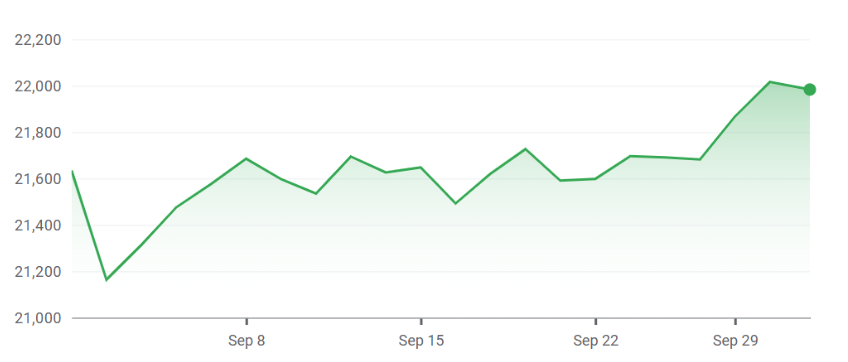
Source: Google Market Data
In Europe (excluding the UK), the EuroStoxx 50 Index rose by just over 3% in September. This brings the 2025 performance close to +12%.
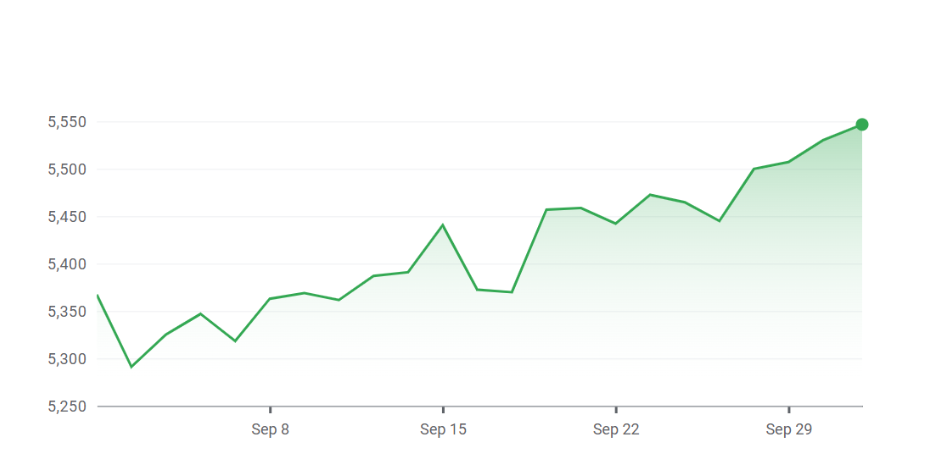
Source: Google Market Data
In North America, the S&P 500 Index rose by over 4% in September. This brings the 2025 performance to +17%.
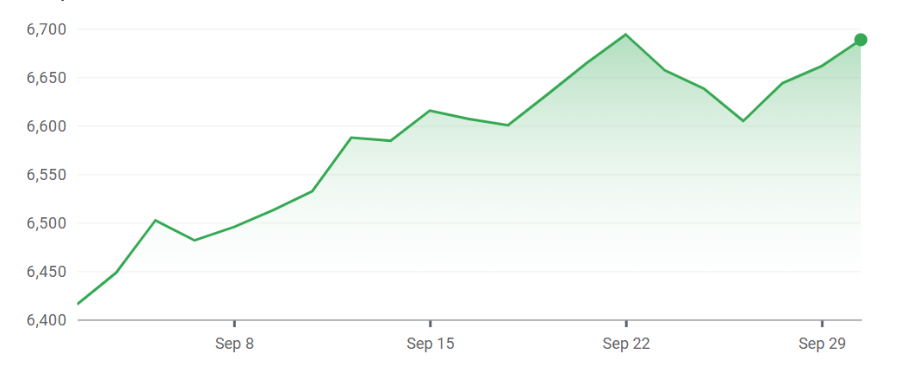
Source: Google Market Data
In Japan, the Nikkei 225 Index rose by more than 5% in September. This brings the 2025 performance to +15%.
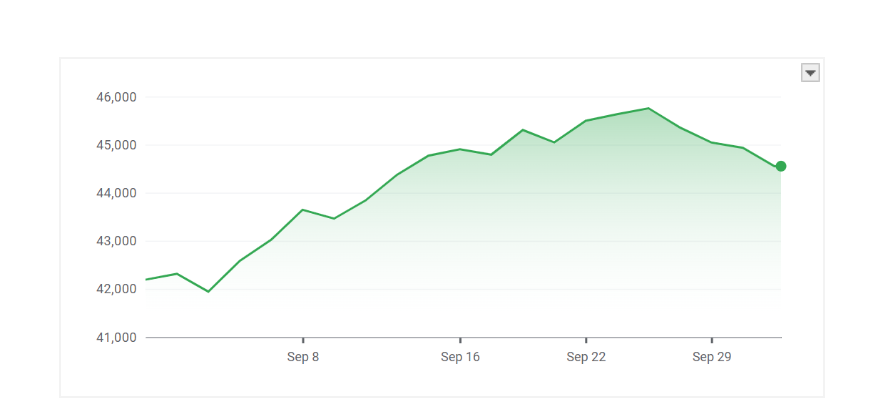
Source: Google Market Data
In the Asia Pacific (excluding Japan), the Hang Seng Index rose by 5% in September. This brings the 2025 performance to 19%.
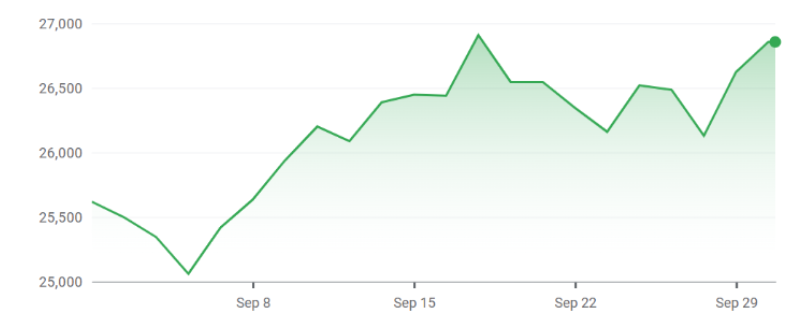 Source: Google Market Data
Source: Google Market Data
The ripple effect on everyday finances
When you hear that “bond yields are rising”, it can feel far away from your daily life. But the reality is these changes touch many parts of everyday life - from savings accounts and mortgages to pensions and stock markets. The good news is, while short-term changes can feel unsettling, pensions are designed with long-term growth in mind - though the value of investments can go down as well as up.
Here’s what rising bond yields mean in practice.
Savings
When government bond yields rise, one positive effect is that savings rates often improve. Banks and building societies sometimes pass this on through higher rates on products like fixed-term accounts or ISAs.
In fact, average one-year fixed savings rates in the UK have been trending upwards alongside gilt yields over the past year. This can make it a little easier to earn more from your cash savings.
Mortgages and loans
The flip side is borrowing. UK mortgage rates tend to move in line with gilt yields, because lenders use government bonds as a benchmark for what it costs them to raise money. As a result, when yields spike, mortgages and other loans can become more expensive.
Investors
For investors, higher yields are a mixed bag. They can make company shares (also known as equities) seem less attractive for a while, as government bonds may start offering comparatively higher returns. That can weigh on stock markets in the short term. But it’s not all negative. In September, strong corporate earnings, especially in US technology firms, helped support equity prices. This shows how resilient markets can be even in a higher-yield environment.
Pensions
Pensions usually hold both equities and bonds, so they feel both sides of the story. When yields rise sharply, the value of existing bonds in your pension can dip, which might make your balance look a little lower in the short run.
Key takeaways
Rising bond yields are a reminder that global market movements can influence pensions here in the UK. While higher yields may cause short-term dips, they also improve the outlook for future returns – showing why pensions are designed for the long term. Here are some key takeaways:
yields are the interest governments and companies pay when they borrow money;
UK gilt yields reached a 27-year high in September, while US Treasury yields also rose;
pension investments are often diversified across shares, bonds and other assets which helps cushion the impact of rising bond yields; and
for long-term savers, market swings like this are normal and usually balance out over time.
The key thing to remember is that your pension is designed for the long term. By staying invested, you give your savings the best chance to grow over time, even when markets feel bumpy in the short run.
Risk warning
As always with investments, your capital is at risk. The value of your investment can go down as well as up, and you may get back less than you invest. This information should not be regarded as financial advice.




